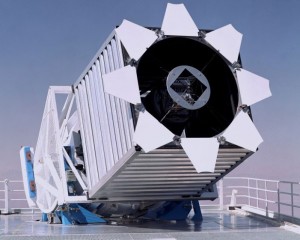In the state of Connecticut, gas costs around $3.70 per gallon. Obama garnered roughly three million more votes than Romney did in 2012. The average college student does laundry nearly every other week. Error and approximation are rampant in everyday life. But researchers working at the Apache Point Observatory in Sunspot, New Mexico have recently taken a big step in eliminating uncertainty from astronomical measurements. Through the Sloan Foundation Survey Telescope, run by the foundation’s Baryon Oscillation Spectroscopic Survey (BOSS), astronomers have been able to compute the distance to galaxies six billion light-years away to an accuracy of within one percent.
“I now know the size of the universe better than I know the size of my house,” said BOSS principal investigator David Schlegel to UW Today, a University of Washington news outlet. Achieving such astounding accuracy has exciting implications for our scientific understanding of the universe. The Sloan telescope has shed new light on how dark energy may fuel the expansion of the universe, and on the possibility of a never-ending, infinite universe.
The making of such precise measurements necessitated equipment and techniques different from those used to map our solar system and the Milky Way galaxy. The Sloan telescope samples light from targeted galaxies using a series of fiber optic cables. Two spectrographs in the body of the telescope analyze the light data, and from this analysis scientists can determine the expansion pattern of the region’s baryon acoustic oscillations (BAOs). BAOs are regular, periodic ripples in the density of galaxies caused by pressure waves moving through space. By accurately determining the size of the BOAs of many galaxies surveyed by this telescope, researchers extracted a precise cosmological ruler 490 million light years long.

Though the BOSS project will not be completed until June 2014, 90 percent of the data has already been collected and analyzed. Analysis of the BOSS data has provided researchers with the “best-ever” understanding of the geometry of space, according to Schlegel. The universe, as it turns out, is essentially flat. “One of the reasons we care is that a flat universe has implications for whether the universe is infinite,” Schlegel told the Berkeley Lab News Center. “That means – while we can’t say with certainty that it will never come to an end – it’s likely the universe extends forever in space and will go on forever in time. Our results are consistent with an infinite universe.”
In addition to this exciting evidence for an infinite universe, the BOSS project is yielding interesting insight about the expansion history of the universe. Precise distance measurements also allow for precise rate-of-expansion calculations, which suggest that dark energy — a theoretical form of energy thought to pervade all of space — acts as a so called “cosmological constant.” The strength of dark energy does not change through time and space. Cosmologists believe dark energy may be behind the acceleration of the expansion of the universe first observed in the 1990s.
BOSS has provided astronomers and cosmologists with a window six billion years into the past. The Sloan Foundation telescope has collected the most precise quantifications of the universe’s expansion history yet. Still, BOSS is just the beginning. For greater understanding of expansion and the dark energy thought to underpin it, greater resolution and scale are required. Slated to begin operation in 2018 at the Kitt Peak National Observatory, the Dark Energy Spectroscopic Instrument (DESI) will construct a map extending 10 billion light years into the universe — nearly doubling the size of the 3D map created by BOSS. Considering the tremendous insight that has been garnered from BOSS, the DESI project promises to be even more enlightening.
As it stands, BOSS will continue to afford scientists an unprecedentedly clear view into the history of our universe and its accelerating, apparently infinite, expansion.
